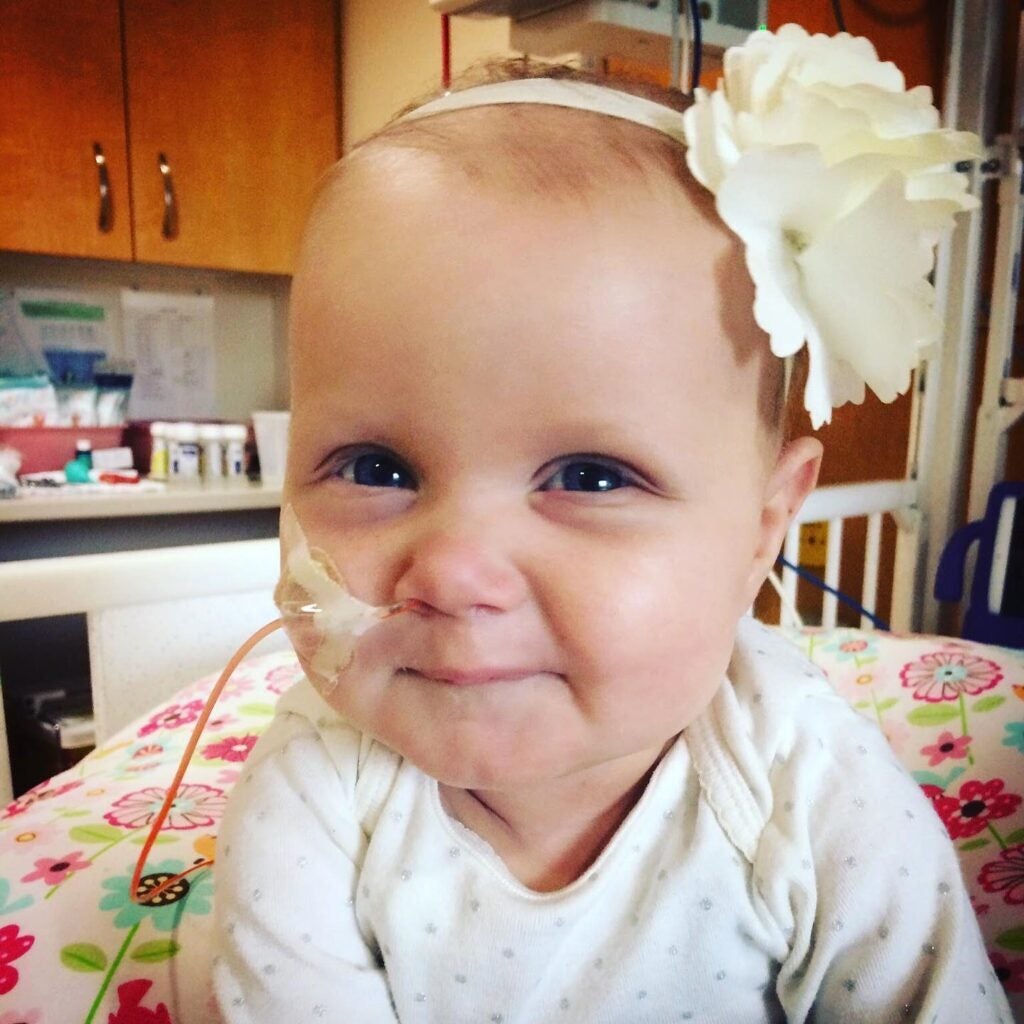Families play vital role in search for childhood cancer cure
According to the American Cancer Society, more than 10,000 children younger than 15 will be diagnosed with some form of cancer this year.
Riley Hospital for Children at Indiana University Health is one of the top hospitals in the country in treating pediatric cancer. Each year, Riley treats an average of 200 children with childhood cancer and provides care for about 350 ongoing cancer patients.
News 8’s Cody Adams knows well the role that Riley and its staff play in caring for children with cancer because his oldest daughter, Madi, was diagnosed with cancer shortly after birth.
All this week, you’ll get the “INside Story” about what children go through as they fight for their lives, how the illness and its treatment impacts their families, and how Riley makes a difference in the battle against childhood cancer.
Part 1 | Part 2 | Part 3 | Part 4 | Part 5

INDIANAPOLIS (WISH)– Dr. Kent Robertson has been at Riley Hospital for Children since the early ’90s, helping the hospital become one of the nation’s leaders in stem cell transplants.
“[We’re] looking at these cells from a scientific standpoint, as to how are they different from normal blood cells. What makes them tick?” Robertson said. “It’s the research that has come in from a number of centers from around the world that address these issues of what makes these tick that allows these therapies to be modified.”
Working alongside Robertson is Dr. Jodi Skiles, the medical director of the pediatric stem cell transplant and immunotherapy program at Riley. For the last four years, she’s been leading some of the country’s best doctors and nurses in treating pediatric cancer patients from across the region.
Skiles and her team focus more than just cancer treatment. The study and research of the disease is just as important.
“There are a lot of diseases for which a lot has changed,” Skiles said. “The new wave of immunotherapy coming down the pike, and gene therapy and gene editing. I think we are going to have so many treatment modalities for patients that will impact lives in terms of survival, but also in terms of absence of toxicity. That is just really exciting. The work that is happening is really good, [but] it always moves slower than we hope.”
Skiles says the research would not be possible if not for the families who are willing to help by having their child take part in a clinical trial.
“We recognize that it is a huge sacrifice for families. It’s already hard to deal with what families are going through, but then to be willing to allow people to learn from your kid’s journey is an unbelievable gift families are giving when they participate in a clinical trial,” Skiles said. “We have to be patient, and persistent, in allowing the science to guide us about what the next best steps are and this is why clinical trial and research are so vitally important, because we will never make progress without that piece.”
Our 7-year-old daughter, Madi, participated in a clinical trial during her treatment at Riley.
Madi’s form of leukemia, juvenile myelomonocytic leukemia, accounts for just 1% of all childhood leukemia. That, combined with the fact that she was so young when she was diagnosed, made her perfect for a new clinical trial at the hospital.
Madi was one of about a dozen children enrolled in the study across the country. The goal of the study was to see if children could be treated with a lighter, less strenuous form of chemotherapy.
Half of the participants received the new chemo regimen, while the other half received the normal, more harsh regimen.
Madi got the normal, hard regimen. In that moment, we were devastated, but as it turns out, we were lucky.
“We would never know if not for that trial, that the therapy that she got — which was very harsh — is actually really necessary,” Skiles said.
Skiles says that’s a part of research process. It doesn’t always go the way we hope. Something that could work on paper doesn’t always pan out in the actual study, but it can lead to other possibilities.
“As sad as those situation are, it fuels our fire and passion to keep moving science forward and to keep finding better solutions for patients and families,” Skiles said.